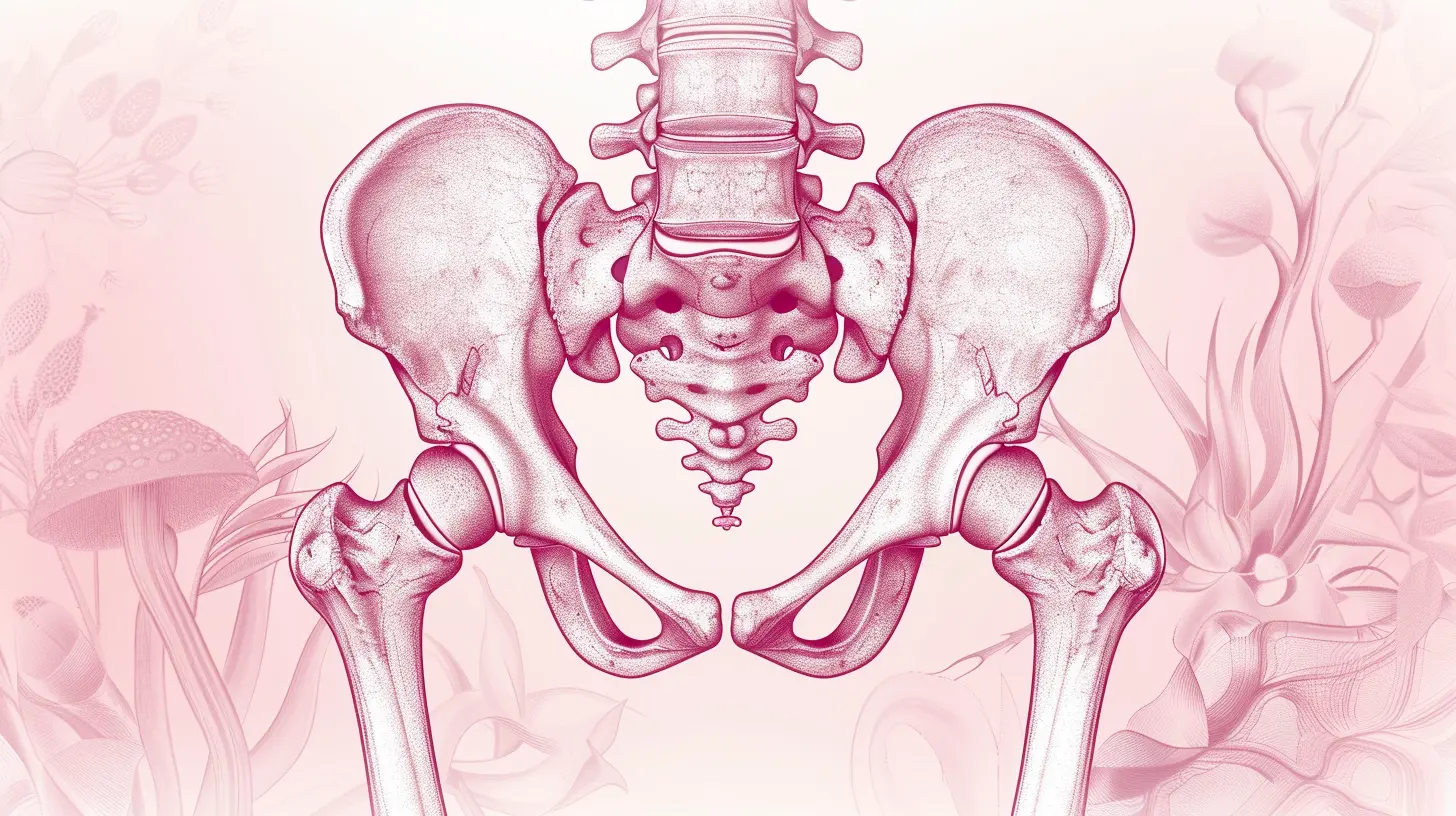How to Manage Postpartum Pelvic Pain
24 September 2025
Let’s be honest—being a new mom is a wild ride. You’ve just gone through the miracle (and marathon) of childbirth, and now you’re adjusting to sleepless nights, endless diaper changes, and oh yeah, that mysterious ache in your lower half that just won’t quit. If you’re feeling sore or uncomfortable down there, you’re definitely not alone. Postpartum pelvic pain is a very real thing, and while it might not be the most glamorous topic, it’s absolutely something we need to talk about.
So, if you’re wondering why your pelvis is throwing a temper tantrum, how long it’s going to last, and what you can actually do about it, you’ve come to the right place. Grab your cozy blanket (or a heating pad, more on that later), and let’s get into the nitty-gritty of managing postpartum pelvic pain—without losing your mind.
What Even Is Postpartum Pelvic Pain?
Okay, first thing’s first: what exactly are we dealing with here?Postpartum pelvic pain refers to discomfort or pain in the pelvic region after giving birth. This can include pain around your hips, pelvis, lower abdomen, or even your tailbone. It can feel sharp, dull, achy, or like a weird pressure—but no matter the flavor, it’s not uncommon.
Some moms feel it right after delivery, while others don’t notice it for weeks. And guess what? Whether you delivered vaginally or had a C-section, that pain can still pop up uninvited.
Why Does It Happen?
Let’s break it down, shall we? Your body just did something pretty incredible: it grew and delivered a whole human being. That process stretches, shifts, and—yes—sometimes strains your body, especially your pelvic region. Here are some main culprits behind the discomfort:1. Relaxin Hormone
During pregnancy, your body releases a hormone called relaxin. It does exactly what it sounds like—helps your ligaments and joints relax and stretch to prepare for birth. But sometimes, it loosens things up a little too much, leaving your pelvis feeling unstable or achy postpartum.2. Pelvic Floor Trauma
Whether it’s from a vaginal tear, episiotomy, or just the sheer pressure of delivery, your pelvic floor muscles can take quite the hit. They might be bruised, swollen, or even slightly injured—hello, pain.3. C-Section Recovery
If you had a C-section, you’re healing from major abdominal surgery. That alone can add stress to your pelvic area, especially when you’re moving, lifting, or bending a lot.4. Posture and Movement
Let’s not forget all the awkward bending, lifting, feeding positions, and doing everything with one hand that new moms do. Poor posture + weakened core = one cranky pelvis.
Common Types of Postpartum Pelvic Pain
Because every mom’s journey is different, pelvic pain can show up in a few different ways:- Pubic Symphysis Dysfunction: Pain in the front of your pelvis, often made worse by standing on one leg or climbing stairs.
- Sacroiliac Joint Pain: Achiness or sharp pain in the lower back or hips.
- Tailbone Pain (a.k.a. coccydynia): Sitting hurts like heck? Yep, probably this.
- Ligament Pain: Especially if things didn’t quite go back to where they started.
Whatever you're feeling, know this—it's valid, and you can manage it.
When Should You Worry?
Pain is your body’s way of saying “Hey! Pay attention to me!” So, while some discomfort is normal, chronic or severe pain should never be ignored.Call your healthcare provider if:
- The pain doesn’t improve after a few weeks
- It’s getting worse instead of better
- It interferes with your ability to walk, care for your baby, or sleep
- You notice numbness, tingling, or incontinence
Better safe than sorry, mama.
How to Manage Postpartum Pelvic Pain (Yep, There’s Hope!)
Okay, let’s get to the good stuff. You don’t have to suffer silently or just “wait it out.” Here are some tried-and-true ways to ease postpartum pelvic pain and get back to feeling like yourself (or at least a better-rested version of yourself).1. Rest—But Not Too Much
Yes, your body needs downtime, but staying in bed all day can actually worsen pelvic pain. Try gentle movement, light walking, and don’t rush into anything intense. Slow and steady wins the postpartum race.Imagine your pelvis like a sprained ankle—it needs care and gradual use, not complete shutdown.
2. Ice, Heat, and Comfort
If it’s swollen or inflamed, go for ice packs (especially right after birth). For muscle tension or aches, heat might be the better option. A warm bath can work wonders too—and hey, it might be the only quiet time you get all day!Pro tip: Keep a heating pad on standby during breastfeeding sessions. Two birds, one stone.
3. Pelvic Floor Physical Therapy
Seriously, whoever came up with this deserves a gold medal. Pelvic floor PT is a game-changer.A pelvic floor therapist can help you:
- Rebuild strength in key muscles
- Improve alignment and posture
- Reduce pain during daily activities
It’s like personal training for your lady bits—what’s not to love?
4. Wear a Pelvic Support Belt
These magical little belts (also known as postpartum girdles) can help stabilize the pelvis, provide support, and make moving around way more comfortable.Think of it as Spanx with a purpose.
5. Modify Your Movements
Little changes can make a big difference. Try:- Sitting with proper back support
- Avoiding crossing your legs
- Lifting with your legs, not your back
- Keeping your knees together when getting out of bed or the car
Move like you’re royalty—slow, graceful, and not in a rush.
6. Do Gentle Stretches and Postpartum Exercises
Once you get the green light from your doc, you can start light stretching and core rebuilding exercises. Start small with things like:- Pelvic tilts
- Deep belly breathing
- Bridge pose
- Cat-cow stretches
These help wake up those sleepy core muscles and ease tension.
7. Use Support Pillows
Whether breastfeeding or bottle-feeding, posture matters. Use pillows to support your back, legs, and arms. And don’t be afraid to build a pillow fort if that’s what helps.Comfort > aesthetics every time.
8. Hydration and Nutrition Matter
Bet you didn’t see this one coming! Staying hydrated and eating anti-inflammatory foods can actually help with tissue healing and reduce inflammation in the body. So say yes to smoothies, leafy greens, and lots of water.Your body just made a human—feed it some love, too.
9. Talk To Someone
Pain can take a toll emotionally as well as physically. Don’t underestimate the power of talking about it. Whether with your partner, a friend, or a counselor, having someone listen can be therapeutic in itself.You don’t have to "tough it out." Vulnerability is the new strong.
Real Talk: Give Yourself Grace
Mama, your body is recovering from one of the most intense things it can go through. You’re not just healing your pelvis—you’re healing every part of you. There’s no medal for rushing your recovery, there’s no prize for pretending you're fine when you’re not.So breathe. Take breaks. Ask for help. Laugh when you can, cry when you need to. You're doing amazing—even if you’re doing it with an ice pack between your legs.
When Will It Go Away?
Ah, the million-dollar question.There’s no one-size-fits-all answer, unfortunately. For some, pelvic pain fades in a few weeks. For others, it may take months—especially if there’s underlying muscle trauma or misalignment.
But with the right support and steps, most moms see improvement over time. Just stay patient and persistent.
Final Thoughts: You’ve Got This
Managing postpartum pelvic pain isn’t always easy, but it is doable. With the right tools, a bit of patience, and a whole lot of self-love, you can feel better, move better, and enjoy this wild and beautiful ride of motherhood.So ice it up, stretch it out, and don’t forget—you’re stronger than you think. And hey, if your pelvis could talk, it’d probably say, “Thanks for taking care of me!
all images in this post were generated using AI tools
Category:
Postpartum RecoveryAuthor:

Kelly Snow
Discussion
rate this article
1 comments
Hawk Barker
Thank you for sharing these valuable insights on managing postpartum pelvic pain! Incorporating gentle exercises, seeking professional help, and practicing self-care can make a significant difference. It’s also essential to communicate openly with healthcare providers about any ongoing discomfort. Your tips are a great support for new parents!
October 1, 2025 at 4:22 AM

Kelly Snow
Thank you for your kind words! I'm glad you found the tips helpful. Prioritizing self-care and communication with healthcare providers is indeed vital for recovery.


